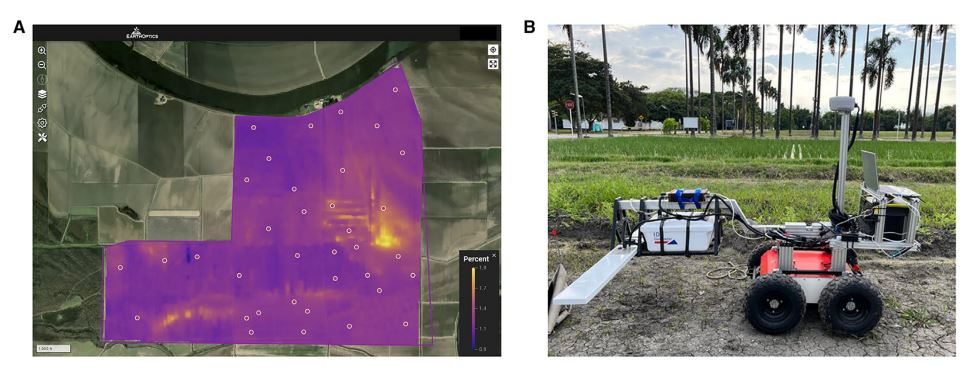January 01, 2024 | Molecular Plant | Source |
Comment: Agricultural practices contribute significantly to atmospheric greenhouse gas emissions, with tillage accelerating soil disruption and carbon release. Research consortium led by Alliance of Bioversity International and CIAT advocates that meeting the triple challenge of increasing food production, achieving net zero carbon emissions, and addressing climate change impacts requires multifaceted approaches, conservation agriculture that promote accumulaion of soil organic carbon (SOC) accumulation through deeper rooting is crucial, and understanding root systems and biophysical features facilitating deep soil penetration is key.
Despite improved insights into deeper-rooting ability, its impact on carbon sequestration remains complex due to practical constraints and real-field variability. Complexities in climates, soil types, and plant roots pose challenges. Leveraging advanced phenotyping technologies and isotopic methods offers avenues for deeper understanding. Machine learning models incorporating depth-related data can enhance predictive insights into SOC dynamics. Exploring deeper-rooting genotypes holds promise for increasing carbon input into soils while enhancing crop yields. Genetic and genomic approaches, including gene editing, offer opportunities to develop more efficient cropping systems. Harnessing genetic diversity in crop varieties becomes crucial for sustainable agricultural practices amidst increasing demands on arable land.
Figure | Agricultural technology advancements: Carbon mapping and robotic field scanning. (A) Predicted carbon map of a Mississippi soybean-corn field. The red points on the map indicate the total number of ground-truth data points collected. This field experiment encompasses a vast area of 414 ha. The predicted carbon map demonstrates a high degree of accuracy, with a mean absolute error of just 0.149 (percentage of total carbon) and a mean absolute percentage error of 14.2%. (B) GroundOwl sensor system integrated with a robot for automated field scanning at the Alliance of Bioversity International and CIAT in Cali, Colombia.






